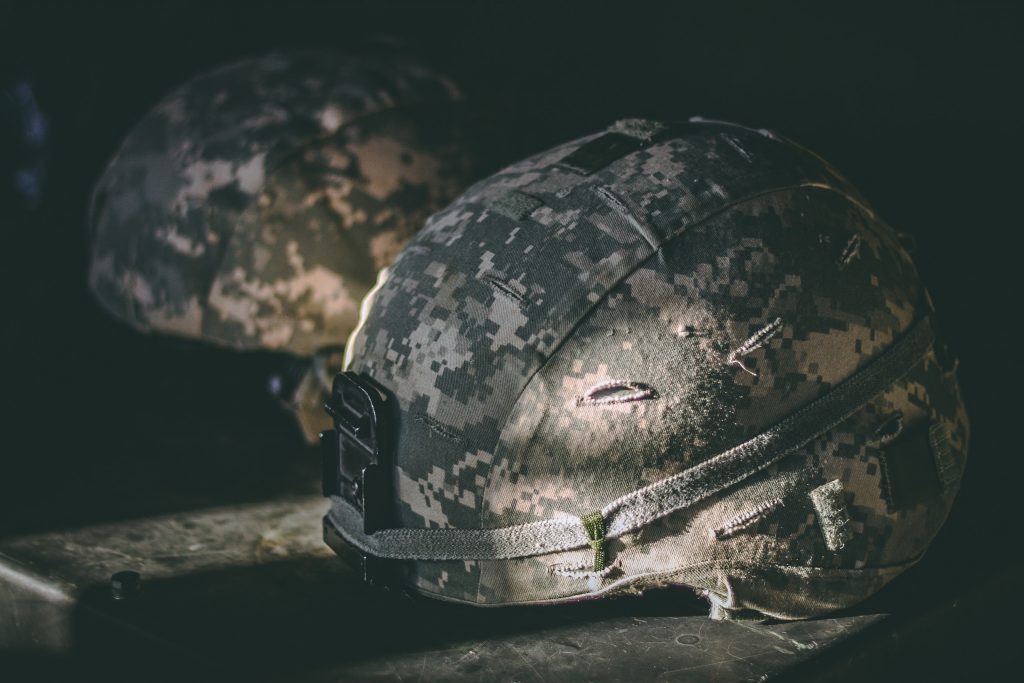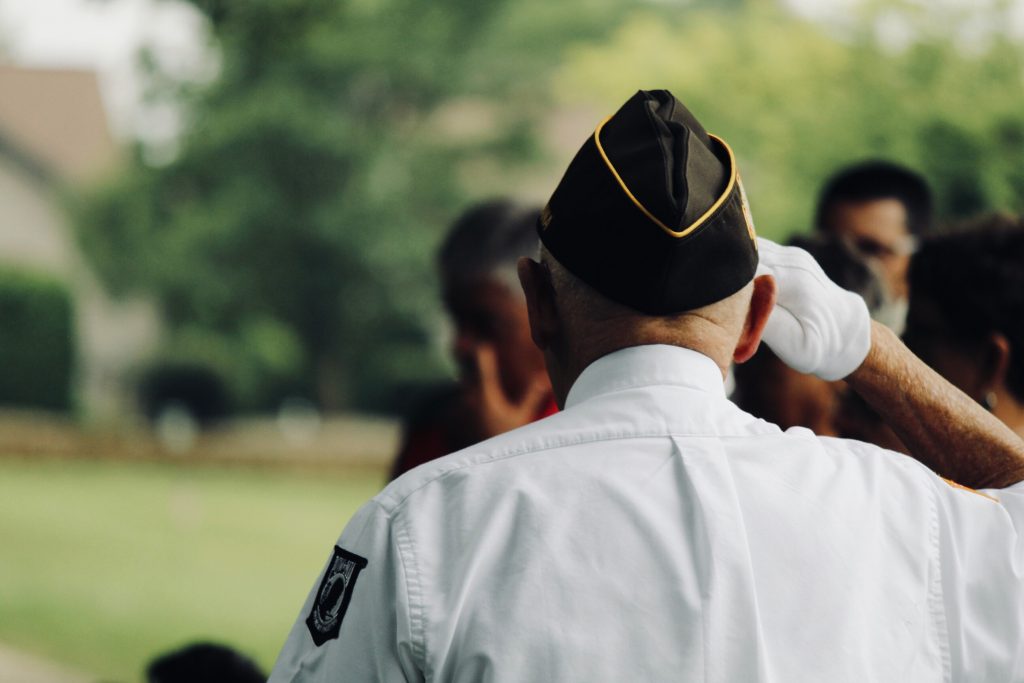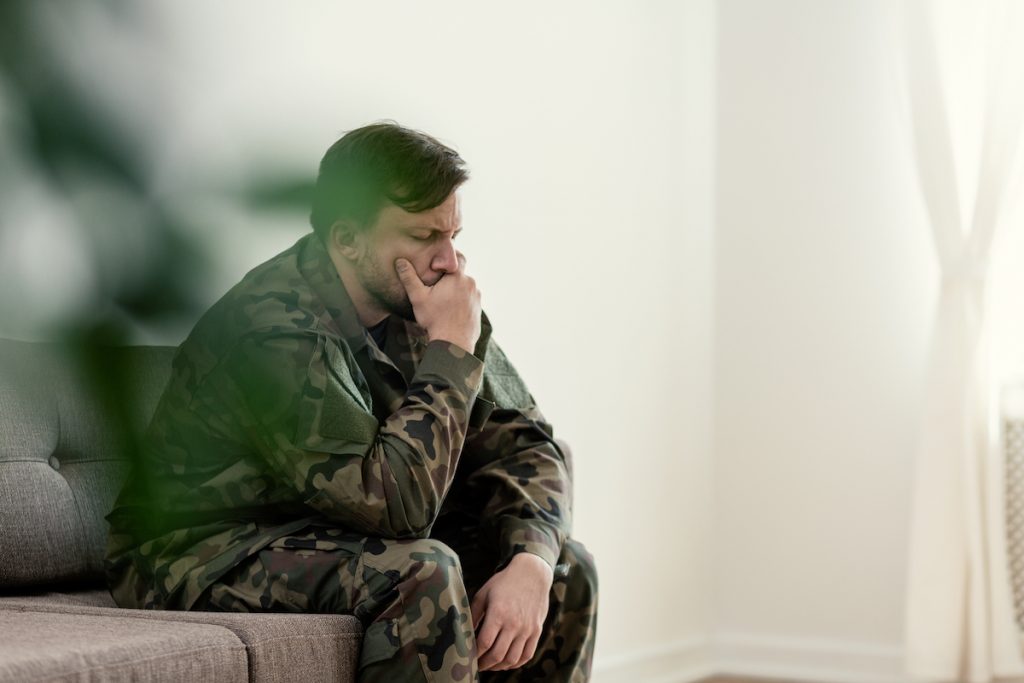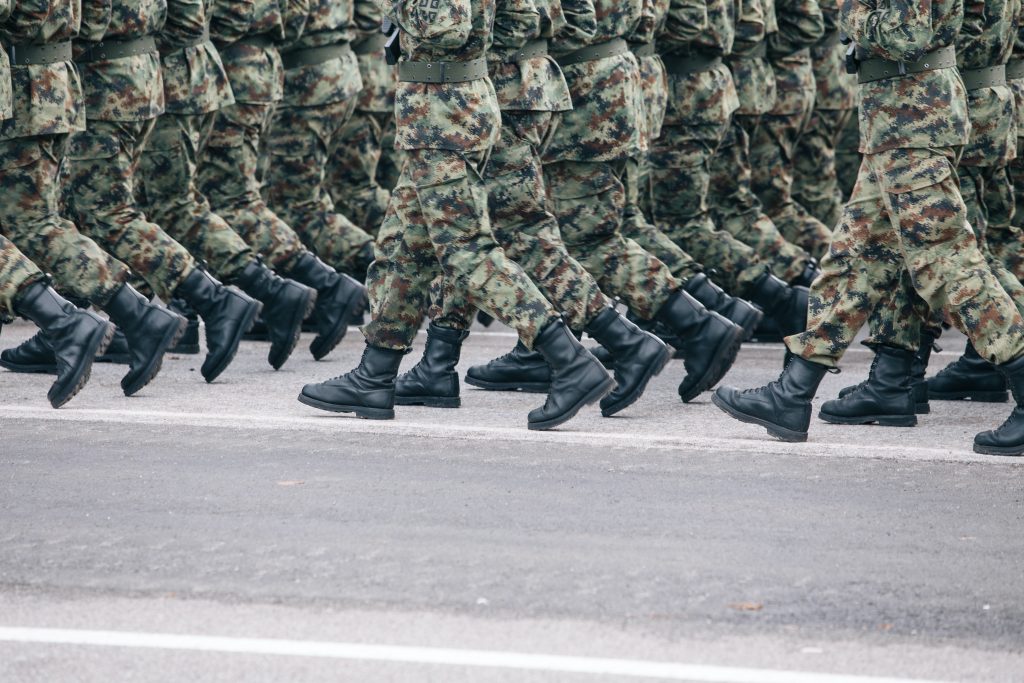
Veterans often experience mental health difficulties, including depression, anxiety (Gould et al., 2014), and importantly, post-traumatic stress disorder (PTSD). PTSD is defined as “reexperiencing the traumatic event, presence of intrusion symptoms, persistent avoidance of stimuli associated with the traumatic event(s), and increased arousal” (DSM-5, American Psychiatric Association, 2013). PTSD prevalence among military personnel varies, e.g., by service (Hines et al., 2014), but meta-analysis evidence from Operation Enduring Freedom/Operation Iraqi Freedom (OEF/OIF) evidence suggests a prevalence of around 23% (Fulton et al. 2015). Despite this high prevalence, only a small number of veterans with PTSD seek help when experiencing mental health difficulties (Possemato et al., 2018).
In a systematic review by Hom et al. (2017), military service members identified confidentiality, embarrassment, and being seen as weak as some of the most important barriers to care. Other reported barriers to help-seeking in military personnel included career concerns (e.g., Coleman et al., 2017) and practical access issues (e.g., unsure of where to seek help, Murphy et al., 2016). Military veterans are also concerned about both internal and external stigma (Murphy & Busuttil, 2015). Barriers to PTSD treatment programs have been shown to also vary by demographic. For instance, senior OEF/OIF veterans are more likely to identify barriers related to cost and time commitments compared to younger veterans (Garcia et al., 2014). To achieve positive treatment outcomes and prevent negative consequences, it’s crucial to identify individual characteristics that may hinder access to care. This involves understanding barriers to care.
The current study (Rozek et al, 2023) used a national sample of US veterans to address two aims:
- To quantify barriers to help seeking
- To identify differences in person-level characteristics (e.g., race, sex) in the barriers to care.

What are the barriers to care experienced by military veterans with mental health difficulties? How do these barriers differ by demographic?
Methods
17,069 veterans (Mean age=47.60 years, SD=14.18) referred to PTSD clinics in the department of Veterans Affairs (VA) in 2019 took part in the study, including those who self-referred and who were referred by medical or mental health services. The following data was collected:
- Demographic information: age, race, ethnicity, sex, periods of military service
- The PTSD Status Form (PSF): a standardised template in the electronic medical record, including veterans’ demographic information, and barriers to care such as concerns relating to the financial aspect or social aspects (family and relationships)
- Presenting problems were split into 9 categories (e.g., problematic medication issues) and were rated by clinicians
- Pain levels (scale 0-10): veterans reported their pain levels and the extent to which it interfered with their activities
- PTSD Checklist for DSM-V (PCL-5; Blevins et al., 2015): a 20-item self-report measure of PTSD symptoms. Participants used a scale from 0 to 4 to rate their symptom severity, and their overall score was reported.
Analysis method
Eighteen binary logistic regressions were conducted with each barrier as the outcome variable to investigate whether there were any significant differences in the perceived barriers based on participants’ demographics (e.g., gender).
Results
Participants were mainly White (62.8%) men (83.3%) who were OEF/OIF veterans (60.7%). On average, veterans’ PTSD symptoms severity was above clinical threshold (>33) and indicative of PTSD (M=53.46; SD=14.51). On average, veterans reported more than two barriers to care (M=2.39, SD=2.27). Across demographic categories, the average sum of presenting problems ranged from 1.41 (SD=0.76) for men to 1.82 (SD=0.95) for women. Presenting problems varied by demographics also. For instance, military sexual trauma was mainly reported by women, whereas a history of Traumatic Brain Injury (TBI) was mainly reported by those who served during OEF/OIF.

Male, White, non Operation Iraqi Freedom/Operation Enduring Freedom veterans were more likely to report zero barriers to treatment versus OIF/OEF, female or Black veterans.
The three most frequent barriers identified across the cohort were:
- Work (30.3%)
- Difficulties being in public (33.8%), and
- Difficulties interacting with others (37.9%).
Almost a quarter of veterans reported no barriers to care (22.3%).
The following significant differences in individual logistic regression models were found:
- Veterans who were male, White, and had not served during the OEF/OIF were more likely to endorse no barriers to treatment, compared to those who served during the OEF/OIF, women, Black and ‘other’ (e.g., American Indian/Alaskan) race veterans.
- OEF/OIF veterans were more likely to identify barriers in relation to work, school, childcare, custody issues, employment concerns, difficulty with getting out of bed/being in public, and criminal justice concerns, compared to those not serving during the OEF/OIF.
- Black veterans were more likely to experience barriers that related to housing, not getting along with family/friends, and difficulties with getting out of bed/interacting with others, compared to White veterans.
- Veterans of ‘other’ (e.g., American Indian/Alaskan) races were more likely to experience concerns around employment, housing, transportation, not getting along with family/friends, difficulty getting out of bed, and difficulties interacting with others, compared to White veterans.
- Women were more likely to express barriers in relation to school, childcare, and difficulty getting out of bed, compared to men.
- Men were more likely to identify employment, not getting along with family/friends, and criminal justice concerns as a barrier, compared to women.

According to this research, the three biggest barriers to PTSD care for veterans are: work, difficulties being in public and difficulties interacting with others.
Conclusions
- Of all veterans surveyed, only 22.3% reported having no barriers to receiving treatment; all other participants reported at least one barrier.
- Participants of different ethnicities and genders faced varying barriers. For example, while 37.9% of all participants had trouble interacting with others, Black veterans and those of other races were more likely to face this challenge than White veterans.
- Additionally, female veterans were more likely to report issues related to school and childcare, compared to their male counterparts.

Over three quarters of more than 17,000 veterans in this survey reported at least one barrier to accessing mental health care, indicating areas for improvements.
Strengths and limitations
The key strengths of this study are its sample size, the spectrum of measures used to portray veterans’ PTSD severity, and that the authors considered demographic information, and pain levels. In addition, the authors also employed a stricter p-value (<.001) to interpret the data due to a large number of analyses/participants, increasing our confidence in the results.
However, while veterans with at least one visit to a PTSD specialty clinic could take part in the study, the number of visits per participant was not reported. It is plausible that participants could have made only one visit to specialty clinics, whereas others could have made a significantly higher number of visits. Without this information, the authors could not explore the association between barriers reported and actual clinic visits, which would have provided richer insight into the potential impact of these barriers overall and for specific demographic groups.
Implications for practice
In PTSD clinics, clinicians may benefit from assessing veterans on an individual basis. This could involve gathering both quantitative data (such as the number of barriers) and qualitative data (such as how a specific barrier affects an individual) to fully understand each veteran’s experience of accessing care. This study has identified several barriers that are specific to certain demographic groups highlighting the importance of intersectional disadvantage. Previous findings, for example from Gross et al. (2022), have identified racial disparities in PTSD treatment, where Black veterans had poorer clinical outcomes compared to White veterans. Evidence provided in this paper on specific barriers could shed some light on the mechanisms behind the disparities observed in clinical care outcomes, while also giving indications of issues that need to be rectified for veterans to access appropriate care. For example, for more female veterans to access care in a timely and consistent manner, on-site options for childcare may need to be implemented or clinical sessions may need to be offered remotely (Schlief et al. 2022).
Research has shown that evidence-based treatments such as Cognitive Behavioral Therapy (Rothbaum et al., 2000), can be effective in treating PTSD. However, it is important to recognise that although care may be available clinically, there may be invisible barriers preventing veterans from accessing this care when they need it most. Structural and attitudinal change to support help-seeking veterans may be required in order to ensure parity of care across demographic groups.

There may be invisible barriers preventing veterans from accessing mental health care when they need it most. Structural and attitudinal change may be required to ensure parity of care for veterans across demographic groups.
Statement of interests
No conflicts of interest to declare.
Links
Primary paper
Rozek, D. C., Steigerwald, V. L., Baker, S. N., Gross, G., Maieritsch, K. P., Hoff, R., … & Smith, N. B. (2023). Understanding veteran barriers to specialty outpatient PTSD clinical care. Journal of Anxiety Disorders, 95, 102675.
Other references
American Psychiatric Association. (2013). Diagnostic and statistical manual of mental disorders (5th ed.). Arlington, VA: Author.
Blevins, C. A., Weathers, F. W., Davis, M. T., Witte, T. K., & Domino, J. L. (2015). The posttraumatic stress disorder checklist for DSM‐5 (PCL‐5): Development and initial psychometric evaluation. Journal of traumatic stress, 28(6), 489-498.
Cameron, R. P., & Gusman, D. (2003). The primary care PTSD screen (PC-PTSD): development and operating characteristics. Primary care psychiatry, 9(1), 9-14.
Coleman, S. J., Stevelink, S. A. M., Hatch, S. L., Denny, J. A., & Greenberg, N. (2017). Stigma-related barriers and facilitators to help seeking for mental health issues in the armed forces: a systematic review and thematic synthesis of qualitative literature. Psychological medicine, 47(11), 1880-1892.
Fulton, J. J., Calhoun, P. S., Wagner, H. R., Schry, A. R., Hair, L. P., Feeling, N., … & Beckham, J. C. (2015). The prevalence of posttraumatic stress disorder in Operation Enduring Freedom/Operation Iraqi Freedom (OEF/OIF) veterans: A meta-analysis. Journal of anxiety disorders, 31, 98-107.
Garcia, H. A., Finley, E. P., Ketchum, N., Jakupcak, M., Dassori, A., & Reyes, S. C. (2014). A survey of perceived barriers and attitudes toward mental health care among OEF/OIF veterans at VA outpatient mental health clinics. Military medicine, 179(3), 273-278.
Gates, M. A., Holowka, D. W., Vasterling, J. J., Keane, T. M., Marx, B. P., & Rosen, R. C. (2012). Posttraumatic stress disorder in veterans and military personnel: epidemiology, screening, and case recognition. Psychological services, 9(4), 361.
Gould, C. E., Rideaux, T., Spira, A. P., & Beaudreau, S. A. (2015). Depression and anxiety symptoms in male veterans and non‐veterans: The Health and Retirement study. International journal of geriatric psychiatry, 30(6), 623-630.
Gross, G. M., Smith, N., Holliday, R., Rozek, D. C., Hoff, R., & Harpaz-Rotem, I. (2022). Racial disparities in clinical outcomes of Veterans Affairs residential PTSD treatment between Black and White veterans. Psychiatric services, 73(2), 126-132.
Hamblen, J. L., Bernardy, N. C., Sherrieb, K., Norris, F. H., Cook, J. M., Louis, C. A., & Schnurr, P. P. (2015). VA PTSD clinic director perspectives: How perceptions of readiness influence delivery of evidence-based PTSD treatment. Professional Psychology: Research and Practice, 46(2), 90–96. https://doi.org/10.1037/a0038535
Hines, L. A., Sundin, J., Rona, R. J., Wessely, S., & Fear, N. T. (2014). Posttraumatic stress disorder post Iraq and Afghanistan: prevalence among military subgroups. The Canadian Journal of Psychiatry, 59(9), 468-479.
Hom, M. A., Stanley, I. H., Schneider, M. E., & Joiner Jr, T. E. (2017). A systematic review of help-seeking and mental health service utilization among military service members. Clinical psychology review, 53, 59-78.
Kiernan, M. D., Osbourne, A., McGill, G., Jane Greaves, P., Wilson, G., & Hill, M. (2018). Are veterans different? Understanding veterans’ help‐seeking behaviour for alcohol problems. Health & social care in the community, 26(5), 725-733.
King, A. P., Erickson, T. M., Giardino, N. D., Favorite, T., Rauch, S. A., Robinson, E., … & Liberzon, I. (2013). A pilot study of group mindfulness‐based cognitive therapy (MBCT) for combat veterans with posttraumatic stress disorder (PTSD). Depression and anxiety, 30(7), 638-645.
Murphy, D., & Busuttil, W. (2015). PTSD, stigma and barriers to help-seeking within the UK Armed Forces. BMJ Military Health, 161(4), 322-326.
Murphy, D., Hodgman, G., Carson, C., Spencer-Harper, L., Hinton, M., Wessely, S., & Busuttil, W. (2015). Mental health and functional impairment outcomes following a 6-week intensive treatment programme for UK military veterans with post-traumatic stress disorder (PTSD): a naturalistic study to explore dropout and health outcomes at follow-up. BMJ open, 5(3), e007051.
Murphy, D., Palmer, E., & Busuttil, W. (2016). Mental health difficulties and help-seeking beliefs within a sample of female partners of UK veterans diagnosed with post-traumatic stress disorder. Journal of clinical medicine, 5(8), 68.
Obuobi-Donkor, G., Oluwasina, F., Nkire, N., & Agyapong, V. I. (2022). A scoping review on the prevalence and determinants of post-traumatic stress disorder among military personnel and firefighters: Implications for public policy and practice. International journal of environmental research and public health, 19(3), 1565.
Possemato, K., Wray, L. O., Johnson, E., Webster, B., & Beehler, G. P. (2018). Facilitators and barriers to seeking mental health care among primary care veterans with posttraumatic stress disorder. Journal of Traumatic Stress, 31(5), 742-752.
Rothbaum, B. O., Meadows, E. A., Resick, P., & Foy, D. W. (2000). Cognitive-behavioral therapy.
Schlief, M., Saunders, K. R., Appleton, R., Barnett, P., San Juan, N. V., Foye, U., … & Johnson, S. (2022). Synthesis of the Evidence on What Works for Whom in Telemental Health: Rapid Realist Review. Interactive Journal of Medical Research, 11(2), e38239.
Seal, K. H., Metzler, T. J., Gima, K. S., Bertenthal, D., Maguen, S., & Marmar, C. R. (2009). Trends and risk factors for mental health diagnoses among Iraq and Afghanistan veterans using Department of Veterans Affairs health care, 2002–2008. American journal of public health, 99(9), 1651-1658.
Photo credits
- Photo by Fraizer Dunleavy on Unsplash
- Photo by Israel Palacio on Unsplash.
- Photo by sydney Rae on Unsplash
- Photo by Markus Spiske on Unsplash
- Photo by Filip Andrejevic on Unsplash
- Photo by Kelly Sikkema on Unsplash
